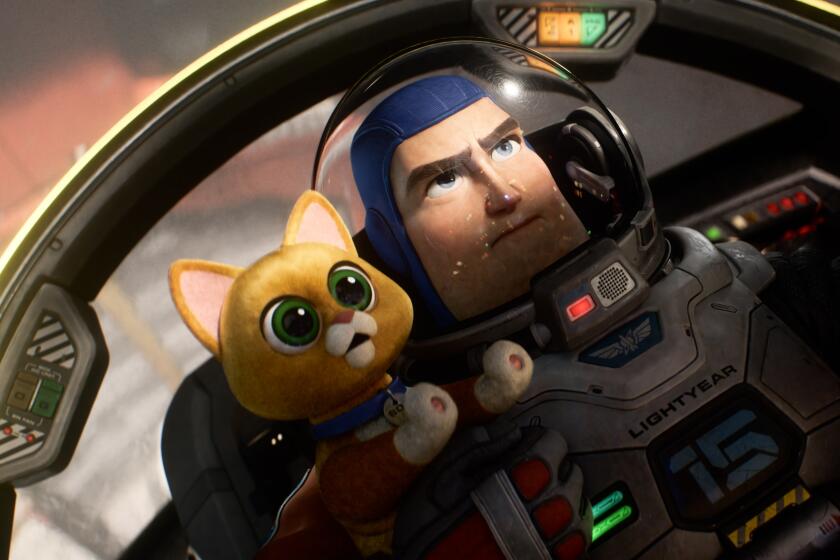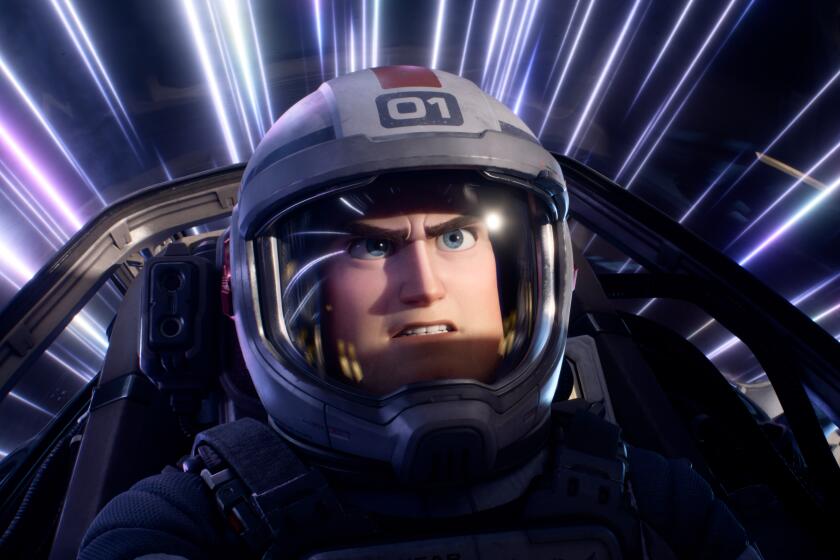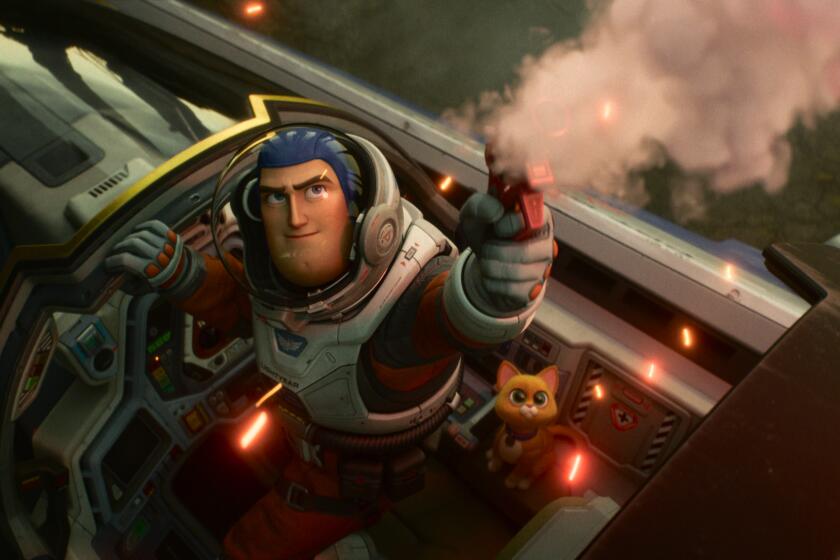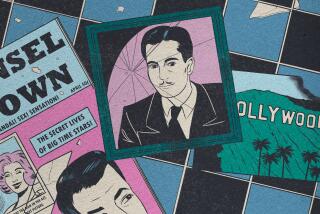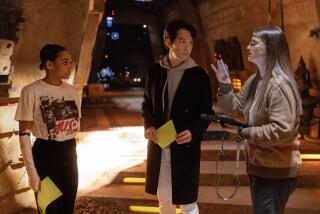‘Lightyear’s’ Alisha Hawthorne breaks new ground for Pixar. She wasn’t part of the original pitch
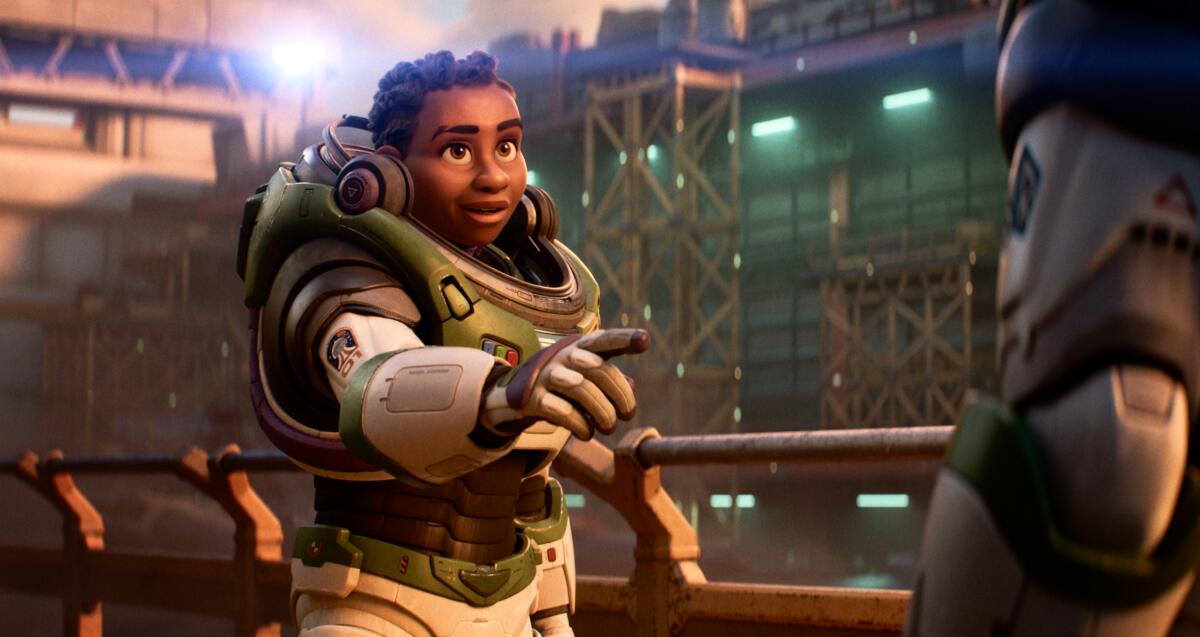
- Share via
Every hero has an origin story — especially ones that launch a line of toys. But even those heroes need someone who believes in them first.
“Lightyear,” Pixar’s latest time-twisted tie-in to the “Toy Story” franchise, now playing in theaters nationwide, tells the origin story of Buzz Lightyear (voiced by Chris Evans) through the context of a sci-fi adventure film. The Space Ranger protagonist in turn inspired a line of toys, including the one Pixar audiences were introduced to in 1995.
Directed by Angus MacLane, who co-wrote the screenplay with Jason Headley, “Lightyear” explains in its opening scrawl that it is the movie Andy from “Toy Story” saw that made him excited for a Buzz Lightyear toy. But beyond that meta framing, the film’s straightforward story follows Buzz as he becomes so fixated on undoing a mistake that derailed his mission and the lives of his shipmates that he refuses to slow down enough to notice that he’s missing out on all other aspects of life.
Pixar’s ‘Lightyear’ has three post-credits scenes, but the final one is there for some very specific reasons.
It’s the stuff of classic Pixar plotlines, but months before its premiere, “Lightyear” was generating buzz unrelated to its central hero.
In March, Walt Disney Co. came under fire for its initial silence regarding a Florida bill restricting classroom discussion of sexual orientation and gender identity — dubbed “Don’t Say Gay” by critics. During the tumult, Pixar employees called out Disney executives for cutting “nearly every moment of overtly gay affection” from the animation studio’s films. Soon after, it was reported that a previously cut kiss shared by queer “Lightyear” character Alisha Hawthorne and her wife was reinstated in the film.
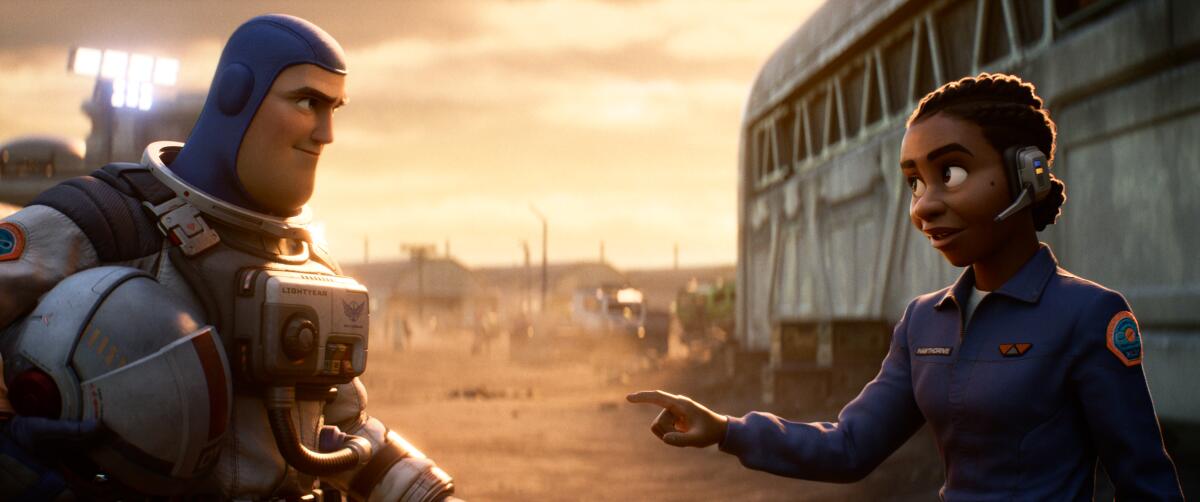
More recently, “Lightyear’s” queer representation has attracted more attention as it has led to the film being banned or canceled from screening in countries such as the United Arab Emirates and Malaysia that disapproved of its inclusion. Not to mention the increasingly loud conservative voices that try to foment irrational outrage over any acknowledgement of the actual reality of LGBTQ people existing.
Although she marks a milestone for LGBTQ inclusion in a Pixar film, there is more to Alisha Hawthorne — Buzz’s commander and fellow Space Ranger — than that kiss. She’s revealed to be one of the reasons Buzz is able to become the hero he has the potential to be.
Uzo Aduba, who voices Alisha in “Lightyear,” describes her as “someone with a really warm heart and soft spot for Buzz.”
Buzz Lightyear is voiced by Chris Evans, and he’s not a toy, in his own ‘Toy Story’ spinoff adventure.
“They’re not just colleagues, they are friends,” said Aduba. “They trust each other immensely. They rely on each other in their work and missions. She is someone who is helping to get Buzz to see all sides of life.”
Like Buzz, Alisha loves her job and is an incredibly capable commander. She is one of the few people Buzz trusts inherently because Alisha gave him a chance when he was an unproven rookie — an example Buzz has trouble following. Alisha even has ties to one of Buzz’s most famous catchphrases.
“Once we figured out Alisha, that just unlocked the emotion for the whole movie,” said MacLane, who explained that it was making her a commander and Buzz’s older sister figure that made so many of the film’s elements click. Although her overall screen time is limited, her presence is felt throughout the entirety of the film.
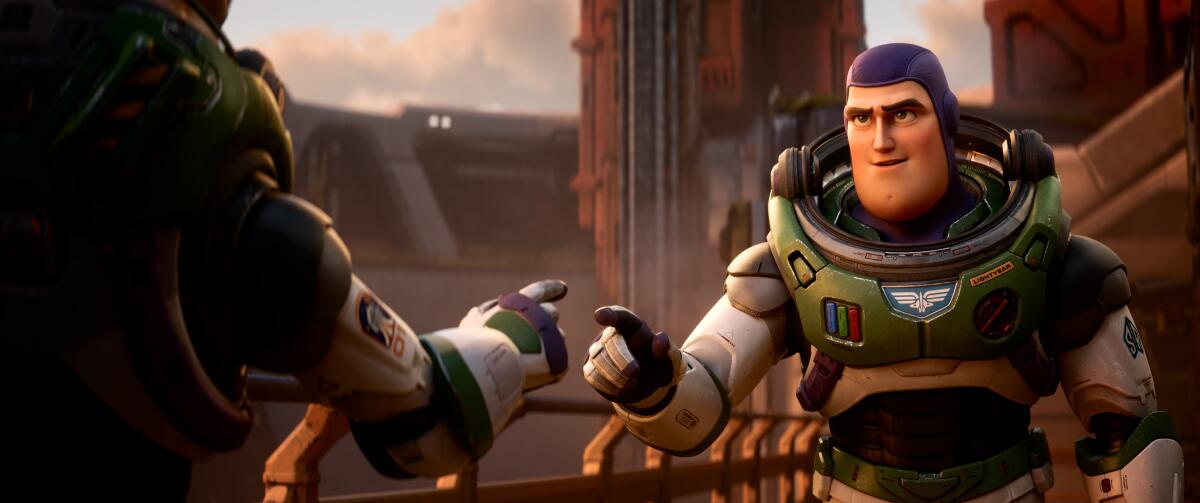
Despite her significance, MacLane revealed that “Alisha as a character wasn’t there in the original pitch” of the movie. Instead, earliest visions of the story paired Buzz with a fellow Space Ranger and pilot with whom he also shared a romantic relationship. But that approach was scrapped when MacLane realized that he didn’t think Buzz worked in romantic situations.
It was because of this observation, as well as for the integrity of Izzy Hawthorne’s storyline, that MacLane wanted to make sure that it was unequivocally clear that romance was never on the table between Buzz and Alisha. Izzy is Alisha’s granddaughter that Buzz eventually meets because his experiments have pushed him out of sync with the standard flow of time.
Izzy, who dreams of following in her grandmother’s footsteps, is not meant to be seen as a love interest at all, let alone one that could be perceived as Buzz’s “second chance” at an unrequited romance.
Malaysia’s film censors say it was Disney’s decision to ax the animated film “Lightyear” from the country’s cinemas after refusing to cut gay scenes.
So “when it was suggested to make Alisha a queer character, that was awesome for two reasons,” said MacLane. “One, representation. And two, [Alisha] can live her separate life and you’re never feeling like there’s jealousy there … it’s more about how she lived a life” and Buzz hadn’t.
Alisha’s life at the colony established by the marooned crew involves falling in love, getting married and starting a family — all while she continues to work as a commander and watches over Buzz as he fixates on finding a way back to Earth. Part of what Buzz has to learn over the course of the movie is that Alisha was not “settling” for a lesser path.
The kiss Alisha shares with her wife, Kiko, is a way for the film to show that they are in a “loving, lasting relationship.” (Disney’s prior pushback was around the kiss and not Alisha’s relationship.)
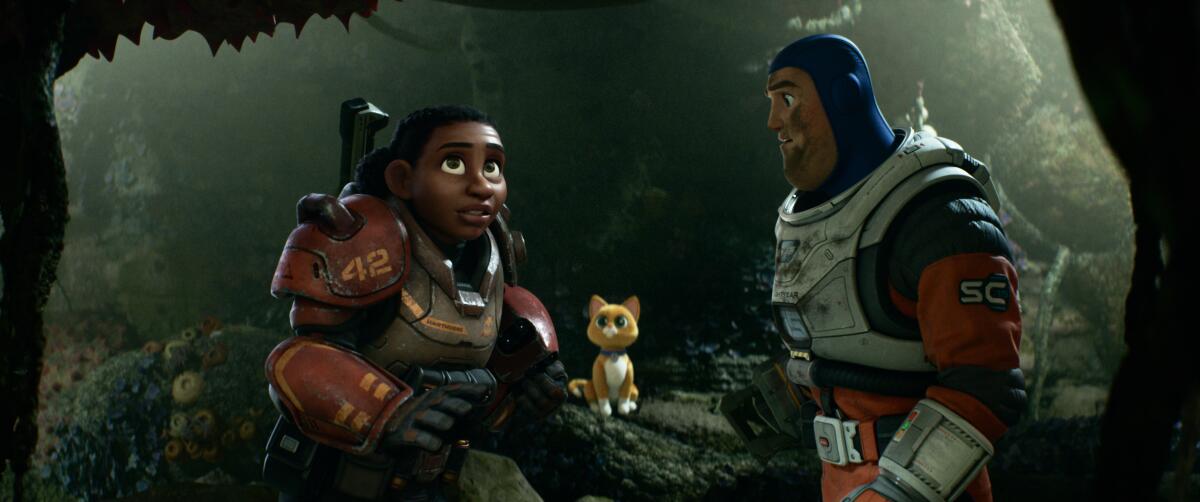
“I don’t know any loving, lasting couples that don’t have some amount of intimacy,” said producer Galyn Susman. “[Alisha’s] coming home to her 40th anniversary party. The most natural and organic thing would be to kiss your spouse when you get home. … We just wanted something that felt authentic.”
According to Susman and MacLane, “every other workaround felt just a little bit less than authentic,” including “a really awkward hand-holding moment … [that] just looked weird.”
For MacLane, just as meaningful as the onscreen representation was the representation behind the scenes and seeing “Lightyear’s” queer staff, including animators and editors, “shepherd the character to get it right.”
“We had a lot of queer personnel on the film,” said MacLane. “There’s a lot of really fantastic representation that means a lot — more than I can understand. For them to be so excited about that and have it be so personal, it means a lot to me.”
Aduba said she’s proud to be a part of an inclusive story being told in a film involving a beloved character from a well-known franchise.
“The exciting thing is that every kid, young and old, will be able to watch a movie like ‘Lightyear’ and see a piece of themselves in it,” said Aduba. “That’s really important for our LGBTQ children and all voices. That’s taking stories to infinity.”
More to Read
Only good movies
Get the Indie Focus newsletter, Mark Olsen's weekly guide to the world of cinema.
You may occasionally receive promotional content from the Los Angeles Times.
